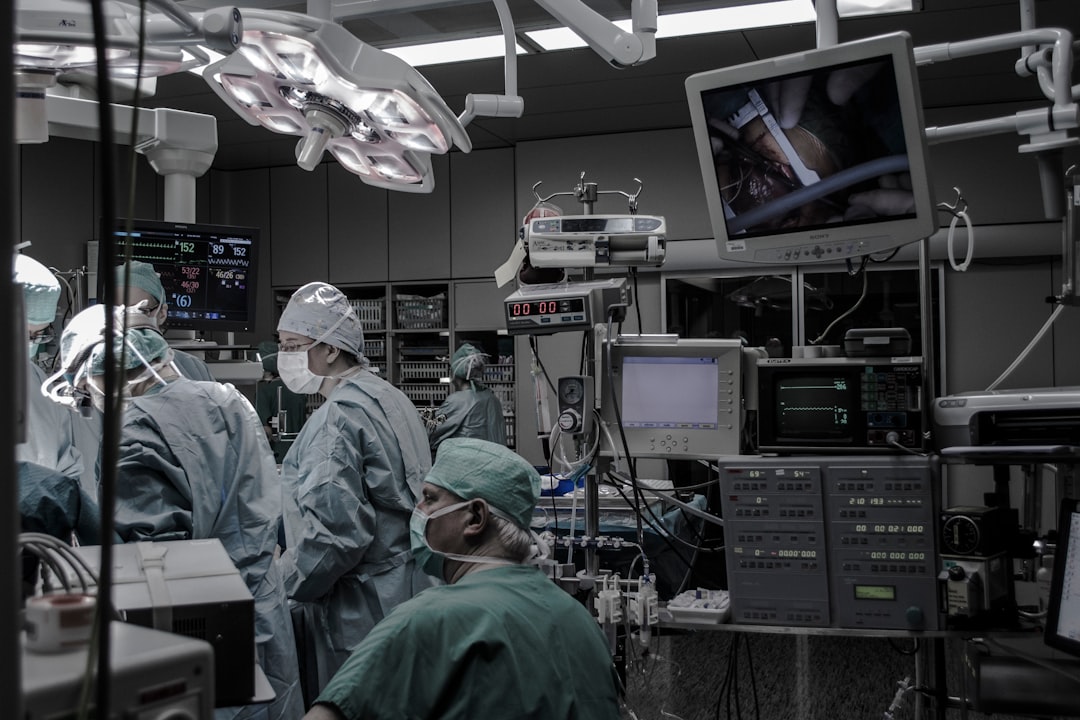

The concept of "standards of care" in law represents a fundamental principle that dictates the degree of prudence and caution required of an individual who is under a duty of care. The historical development of these legal standards offers a fascinating journey through evolving societal norms, judicial interpretations, and legislative frameworks.
In ancient societies, the notion of care was often governed by rigid customs and traditions, rather than codified laws. For instance, in Roman law, the principles of "Lex Aquilia" provided early examples of liability for harm caused to others. These early doctrines laid the groundwork for later legal theories about negligence and duty.
With the progression into medieval times, English common law began to take shape. The famous case of "The Case of Thorns" (1466) is often cited as one of the earliest instances where negligence was addressed in court. A man trimming his thorn bushes caused them to fall onto his neighbor's land, resulting in injury. The court held him liable for not exercising reasonable care-a rudimentary form of what we now recognize as a standard of care.
As society evolved through industrialization during the 18th and 19th centuries, so too did the complexity and necessity for more formalized standards. Factories and urban environments introduced new risks and hazards that necessitated clearer guidelines. This period saw significant developments in tort law; particularly noteworthy is the landmark case "Donoghue v Stevenson" (1932), which profoundly influenced modern negligence law. In this case, Lord Atkin articulated what has come to be known as the neighbor principle, suggesting that individuals owe a duty to avoid acts or omissions that could foreseeably harm others.
The 20th century introduced further refinements through statutory regulations and professional codes. Medical malpractice became a key area where standards were rigorously developed; courts began to rely on expert testimony to determine what constituted appropriate care within professional contexts. The introduction of guidelines by bodies such as medical boards helped standardize expectations across professions.
Concurrently, legislative interventions played an increasing role in shaping standards. Laws like the Occupational Health and Safety Act set explicit requirements for employer conduct towards employees' safety at work, reflecting society's growing insistence on proactive protections against harm.
In recent decades, there has been an ongoing expansion into various fields such as technology and environmental law where new standards continue to emerge in response to contemporary challenges. Cybersecurity laws now outline specific duties regarding data protection-a modern echoing in digital realms of age-old principles concerning duty and breach.
Throughout history, judicial decisions have also continued to evolve these standards dynamically, incorporating societal changes and scientific advancements into their considerations. Courts increasingly consider evidence-based practices when adjudicating cases involving complex technical matters.
In summary, the historical development of standards of care in law illustrates an ever-evolving landscape shaped by cultural norms, technological advancements, judicial wisdom, and legislative action. From ancient customs to contemporary statutes governing cyberspace conduct-this journey underscores a persistent endeavor: safeguarding individuals from harm while balancing fairness and justice within society's intricate fabric.
In the realm of legal standards of care, key principles and definitions serve as the foundation upon which judgments and decisions are made. These principles not only guide legal practitioners but also provide essential clarity to those subject to these standards. Understanding these concepts is crucial for anyone involved in legal disputes or practice, as they delineate the boundaries of acceptable conduct and negligence.
At its core, the standard of care refers to the level of prudence and caution required of an individual who is under a duty of care. This benchmark is typically determined by what a "reasonable person" would do under similar circumstances. The reasonable person standard is an objective measure that eschews personal idiosyncrasies in favor of a collective societal expectation. It asks not what any particular person would do, but what a hypothetical, rational individual would consider appropriate in a given situation.
One central principle in understanding legal standards of care is foreseeability. This pertains to whether a reasonable person could anticipate the potential harm their actions might cause. If such harm was foreseeable, failing to take steps to prevent it can constitute negligence. For instance, if a property owner neglects to fix a broken staircase despite knowing about its condition, they may be held liable for injuries resulting from that neglect.
Another pivotal concept is causation, which links the breach of duty directly to the harm caused. In legal terms, this often breaks down into two components: actual cause and proximate cause. Actual cause means that the defendant's actions were the direct catalyst for the plaintiff's injury-often phrased as "but-for" causation (but for the defendant's actions, the injury would not have occurred). Proximate cause delves deeper into whether it was foreseeable that such actions could lead to such an outcome-essentially evaluating how closely connected the conduct and resulting harm are.
The doctrine of comparative negligence further complicates this landscape by acknowledging that multiple parties may share responsibility for an incident. Under this doctrine, each party's level of fault is measured and assigned accordingly. This principle recognizes that life's complexities rarely yield simple answers; instead, it apportions liability in alignment with each actor's degree of negligence.
Another important notion within this framework is vicarious liability. This principle holds one party responsible for another's actions based on their relationship-such as employer-employee dynamics or parent-child relationships. Vicarious liability underscores how interconnected societal roles can distribute accountability beyond direct perpetrators alone.
Lastly, informed consent stands out as particularly relevant in medical contexts where patients must be fully aware of risks before undergoing treatments or procedures. Failure to obtain informed consent can lead healthcare providers into serious legal jeopardy under claims of malpractice.
In summary, key principles like reasonableness, foreseeability, causation (both actual and proximate), comparative negligence, vicarious liability, and informed consent form an intricate web within legal standards of care designed to ensure fairness while upholding societal norms and expectations. These concepts strive not only for justice but also offer vital guidance meant to minimize harm through prudent behavior-a balance essential both within courts' confines and broader society alike.
When we think of medical care, we often envision trust, competence, and a commitment to our well-being.. However, there are unfortunate instances where things go wrong—sometimes disastrously so.

Posted by on 2024-09-18
When you or a loved one falls victim to medical malpractice, it is an experience fraught with emotional and legal complexity.. Navigating the labyrinthine corridors of hospitals and courtrooms can be overwhelming and isolating.

Posted by on 2024-09-18
Becoming a medical malpractice lawyer is a journey that not only demands rigorous academic and professional preparation but also requires an unwavering commitment to ethical considerations and client advocacy.. These two components are integral to the practice of law in this specialized field, where the stakes are exceptionally high for both plaintiffs and defendants. First and foremost, the path to becoming a medical malpractice lawyer begins with obtaining a bachelor's degree followed by a Juris Doctor (JD) from an accredited law school.

Posted by on 2024-09-18
Navigating the labyrinth of a medical malpractice claim can be daunting.. When you or a loved one has suffered from substandard medical care, understanding the process of filing a claim with a medical malpractice lawyer becomes essential.

Posted by on 2024-09-18
Choosing the best medical malpractice lawyer is a crucial step in ensuring that you receive fair representation and justice in your case.. Among the various factors to consider, one often-overlooked aspect is verifying professional memberships and awards.

Posted by on 2024-09-18
The Role of Professional Guidelines and Codes of Conduct in Legal Standards of Care
In the complex landscape of modern healthcare, legal standards of care serve as critical benchmarks for ensuring that patients receive appropriate and effective treatment. These standards are not created in a vacuum; they are deeply influenced by professional guidelines and codes of conduct established by medical organizations and regulatory bodies. Understanding the role these guidelines play is essential for both practitioners and patients alike.
Professional guidelines are systematically developed statements that assist practitioners in making decisions about appropriate healthcare for specific clinical circumstances. These guidelines are often based on a comprehensive review of current evidence, expert opinion, and clinical best practices. They provide a framework within which healthcare professionals can assess, diagnose, treat, and manage patient conditions. Adherence to these guidelines helps ensure consistency, quality, and safety in patient care.
Codes of conduct, on the other hand, encompass broader ethical principles that guide the behavior of healthcare professionals. These codes typically cover aspects such as patient confidentiality, informed consent, professional integrity, and respect for patient autonomy. While less prescriptive than clinical guidelines, codes of conduct establish foundational values that underpin the trust between patients and healthcare providers.
In terms of legal standards of care, both professional guidelines and codes of conduct play indispensable roles. Courts often refer to these documents when determining whether a healthcare provider has met the requisite standard of care in medical malpractice cases. Adhering to established professional guidelines can serve as strong evidence that a practitioner acted competently and responsibly under prevailing circumstances.
Moreover, deviations from these guidelines do not necessarily imply negligence or malpractice; however, they do require justification based on individual patient needs or specific situational factors. For example, if a doctor chooses an alternative treatment path not outlined in standard guidelines but can demonstrate that this decision was based on sound medical reasoning tailored to the patient's unique condition, this may still meet legal standards of care.
Similarly, breaches in codes of conduct can have significant legal implications even if no physical harm results from the violation. For instance, failure to maintain patient confidentiality could lead to legal actions rooted in breaches of privacy laws or ethical violations.
Professional bodies continually update their guidelines and codes to reflect advancements in medical science and evolving societal values. This dynamic nature ensures that legal standards remain relevant over time but also poses challenges for practitioners who must stay abreast with ongoing changes.
In conclusion, professional guidelines and codes of conduct are integral components shaping the legal standards of care within healthcare settings. They provide detailed frameworks for clinical practice while embedding ethical principles necessary for maintaining public trust. Practitioners who diligently follow these recommendations contribute not only to improved patient outcomes but also protect themselves against potential legal repercussions. As such, understanding their role is crucial for anyone involved in delivering or receiving healthcare services today.

Case law, also known as judicial precedent, plays an instrumental role in shaping and defining the standards of care within various legal contexts. These decisions by courts set precedents that influence how future cases are judged, ensuring consistency and predictability in legal proceedings. The standards of care established through case law help determine what is considered acceptable behavior or practice within a given profession or scenario, thereby guiding individuals and organizations in their daily operations.
The concept of standards of care is particularly critical in fields such as healthcare, tort law, and professional services. In healthcare, for example, physicians are expected to adhere to a certain level of competency and diligence when treating patients. Case law helps define these expectations by examining past judgments where medical professionals either met or failed to meet the requisite standard of care. A landmark case often cited in this context is Bolam v Friern Hospital Management Committee (1957), which established the "Bolam Test." This test asserts that a doctor is not negligent if they act in accordance with a practice accepted as proper by a responsible body of medical opinion.
Similarly, in tort law, case law serves as a foundational framework for determining negligence. The famous case of Donoghue v Stevenson (1932) laid down the principle that one must take reasonable care to avoid acts or omissions which can reasonably be foreseen as likely to cause harm to others. This case introduced the "neighbor principle," effectively setting a standard for duty of care that has been applied across multiple jurisdictions and scenarios.
Professional services are also heavily influenced by judicial precedents concerning standards of care. For instance, legal professionals are expected to provide competent representation to their clients. Cases like Hall v Simons (2000) have helped delineate the boundaries within which lawyers must operate to avoid claims of negligence or malpractice.
One significant advantage of relying on case law for defining standards of care is its dynamic nature. Courts continually interpret and refine these standards based on evolving societal norms, technological advancements, and new evidence. This ensures that legal standards remain relevant and applicable to contemporary issues.
However, there are challenges associated with this reliance on judicial precedent. One notable concern is the potential for inconsistency between different jurisdictions or even between different courts within the same jurisdiction. Additionally, some argue that judges' interpretations may sometimes be influenced by personal biases or societal pressures rather than objective legal principles.
Despite these challenges, the role of case law in influencing standards of care remains indispensable. It provides a robust mechanism for balancing individual rights with societal expectations while ensuring accountability across various sectors. By examining past rulings and adapting them to current contexts, courts continue to uphold justice and promote fairness within our legal system.
In conclusion, case law significantly impacts the development and enforcement of standards of care across various domains. Through landmark decisions and ongoing judicial interpretation, it ensures that individuals and organizations understand their responsibilities and liabilities under the law. While not without its complexities, this system fosters consistency and adaptability within our ever-evolving society.
Comparative Analysis: Different Jurisdictions and Their Approaches to Legal Standards of Care
The concept of a legal standard of care is central to the practice of law, especially in areas such as tort law, medical malpractice, and professional negligence. However, the application and interpretation of this concept can vary significantly across different jurisdictions. This essay aims to explore how various legal systems approach the standard of care required by professionals and individuals, highlighting both commonalities and differences.
In common law jurisdictions like the United States and the United Kingdom, the standard of care is generally determined by what a "reasonable person" would do under similar circumstances. This reasonable person standard serves as an objective measure against which actual behavior is evaluated. In medical malpractice cases within these jurisdictions, for instance, the standard often hinges on what a reasonably competent physician would have done in a similar situation. The famous Bolam test from UK case law further refines this by stating that a doctor is not negligent if they act in accordance with a practice accepted as proper by a responsible body of medical professionals skilled in that particular art.
Contrastingly, civil law countries such as Germany and France often employ a more codified approach to standards of care. In Germany, for example, the Bürgerliches Gesetzbuch (BGB) or Civil Code lays out specific duties and obligations that individuals must adhere to. The German system tends to be more prescriptive about what constitutes acceptable behavior in various contexts. Similarly, French civil law relies heavily on statutes like the Code Civil but also incorporates principles from judicial decisions to define standards of care.
One notable distinction between these two broad legal traditions lies in their treatment of expert testimony. Common law systems frequently rely on expert witnesses to establish what constitutes reasonable care within specialized fields such as medicine or engineering. These experts provide context-specific insights that help juries or judges make informed decisions. In contrast, civil law jurisdictions may place less emphasis on expert testimony due to their reliance on detailed statutory guidelines.
Another interesting facet is how emerging fields such as technology and data privacy are influencing standards of care across jurisdictions. For instance, European Union regulations like the General Data Protection Regulation (GDPR) have set high standards for data protection, impacting not just member states but also companies worldwide that deal with EU citizens' data. These regulations embody an evolving understanding of due diligence and responsibility in an increasingly digital world.
Despite these differences, there are converging trends driven by globalization and cross-border activities. International bodies such as the World Health Organization (WHO) and various professional associations are working towards harmonizing standards across borders through guidelines and best practices. This trend is particularly evident in sectors like aviation safety and financial regulation where standardized global practices are essential for operational efficiency and safety.
In conclusion, while there are significant jurisdictional differences in how legal standards of care are defined and applied, there are also overarching principles that guide their implementation globally. Whether through common law's reliance on reasonable person standards or civil law's detailed statutory provisions, each system aims to ensure accountability and protect individuals from harm. As new challenges emerge in our interconnected world, these legal frameworks will continue to evolve, reflecting societal values while striving for consistency across borders.
Establishing and upholding standards of care within the legal framework is a multifaceted challenge that touches upon various aspects of law, medicine, ethics, and public policy. The term "standards of care" refers to the degree of prudence and caution required of an individual or organization who is under a duty of care. These standards are critical because they serve as benchmarks for assessing the quality and appropriateness of care provided in professional settings, particularly in healthcare.
One significant challenge in establishing these standards is the dynamic nature of knowledge and practice within industries like healthcare. Medical advancements occur at a rapid pace, with new treatments, technologies, and methodologies constantly emerging. This fluidity makes it difficult to set static standards that remain relevant over time. Legal standards often lag behind medical innovations due to the thorough and slow-moving process required for legislative changes and judicial precedent-setting.
Another complicating factor is the diversity in patient needs and circumstances. Standards must be comprehensive enough to cover a wide range of scenarios but also flexible enough to allow for individualized patient care. This balancing act can be precarious; overly rigid standards may stifle innovation or fail to account for unique cases, while overly lenient ones may lead to inconsistencies in care quality.
Moreover, there exists an inherent tension between legal imperatives and clinical judgment. Physicians are trained to make decisions based on their professional expertise and experience with individual patients. However, when legal regulations impose strict guidelines on how care should be administered, it can limit a physician's ability to exercise discretion tailored to each patient's specific situation. This can lead to defensive medicine practices where doctors prioritize legally safe options over what might be clinically optimal for fear of litigation.
The enforcement of these standards poses its own set of challenges. Regulatory bodies must have robust mechanisms for monitoring compliance without being excessively intrusive or burdensome on professionals trying to perform their duties effectively. Additionally, there must be clear consequences for failing to meet established standards-yet determining culpability can be complex due to the nuanced nature of many professional judgments.
Public perception also plays a role in shaping both the establishment and enforcement of standards of care. Media coverage of high-profile cases involving alleged breaches can lead to calls for stricter regulations, which may not always align with practical realities or expert recommendations. Policymakers must navigate these pressures while striving towards balanced regulations that protect patients' interests without unduly constraining providers.
Lastly, disparities in resources across different regions or institutions can create uneven implementation of standards. What is feasible in a well-funded urban hospital may not be possible in a rural clinic with limited staff and equipment. Thus, setting universal standards that account for such variability without compromising patient safety remains an ongoing dilemma.
In conclusion, establishing and upholding legal standards of care involves navigating a labyrinthine array of challenges ranging from evolving medical knowledge and diverse patient needs to regulatory enforcement complexities and public opinion influences. It requires constant dialogue between lawmakers, healthcare providers, regulatory agencies, patients' advocacy groups, and other stakeholders committed to fostering an environment where high-quality care is consistently delivered while allowing room for professional judgment and innovation.
The legal standards of care, a cornerstone of both civil and criminal law, continue to evolve in response to societal changes, technological advancements, and an increasingly interconnected world. As we look toward the future, several key directions and emerging trends are poised to reshape these standards in profound ways.
One notable trend is the growing influence of technology on legal standards of care. With the rapid advancement of artificial intelligence (AI) and machine learning, there is an increasing need for legal frameworks that address the responsibilities and liabilities associated with these technologies. For instance, autonomous vehicles present a unique challenge; determining fault in accidents involving self-driving cars requires new considerations that traditional negligence laws may not adequately cover. The development of AI-driven medical diagnostics also demands updated standards to ensure that practitioners who rely on these tools do so within acceptable bounds of professional responsibility.
Another significant direction is the emphasis on global harmonization of legal standards. As businesses operate more frequently across national borders and individuals interact internationally through digital platforms, discrepancies between jurisdictions' legal expectations can lead to confusion and conflict. Efforts are underway to create more cohesive international guidelines that facilitate smoother cross-border transactions and interactions while ensuring consistent protection for parties involved.
The realm of healthcare has always been deeply entwined with legal standards of care, but recent developments are prompting further evolution. The COVID-19 pandemic highlighted gaps in existing laws regarding public health emergencies. Consequently, there's a push towards refining legal standards to better address such scenarios in the future-balancing individual rights with collective safety becomes crucial as governments prepare for potential pandemics or other large-scale health crises.
Additionally, societal shifts towards greater inclusivity and recognition of diverse populations impact how legal standards are defined and enforced. For example, evolving views on gender identity necessitate updates in healthcare practices to ensure appropriate care for transgender patients without discrimination. Similarly, as awareness grows around mental health issues, there is increased scrutiny on how mental health care providers meet their duty of care obligations.
Furthermore, environmental considerations are increasingly influencing legal standards in various sectors including corporate governance, real estate development, and manufacturing processes. As climate change concerns intensify, corporations face heightened expectations regarding their environmental impact-a trend reflected by stricter regulations aimed at curbing harmful practices and promoting sustainability.
In conclusion, the future directions and emerging trends in legal standards of care reflect a dynamic interplay between technological innovation, globalization pressures, evolving societal values, public health imperatives, and environmental sustainability concerns. Legal professionals must stay abreast of these changes to effectively navigate this complex landscape while ensuring justice and fairness remain at the forefront of their practice. As we move forward into this new era marked by rapid transformation across multiple fronts, adaptability will be key in maintaining robust yet flexible standards capable of addressing contemporary challenges head-on.